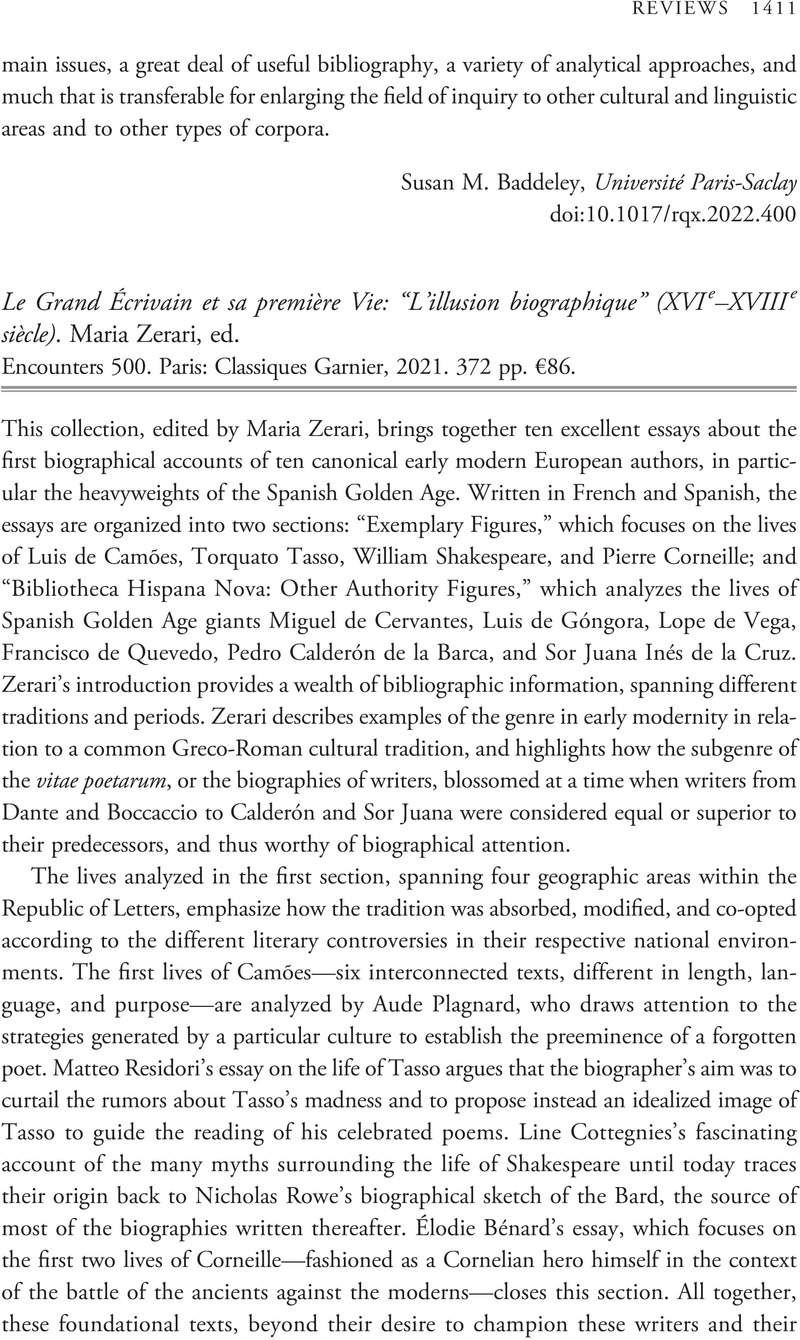No CrossRef data available.
Article contents
Le Grand Écrivain et sa première Vie: “L'illusion biographique” (XVI e–XVIII e siècle). Maria Zerari, ed. Encounters 500. Paris: Classiques Garnier, 2021. 372 pp. €86.
Review products
Le Grand Écrivain et sa première Vie: “L'illusion biographique” (XVI e–XVIII e siècle). Maria Zerari, ed. Encounters 500. Paris: Classiques Garnier, 2021. 372 pp. €86.
Published online by Cambridge University Press: 09 January 2023
Abstract
An abstract is not available for this content so a preview has been provided. Please use the Get access link above for information on how to access this content.

- Type
- Review
- Information
- Copyright
- Copyright © The Author(s), 2022. Published by the Renaissance Society of America



